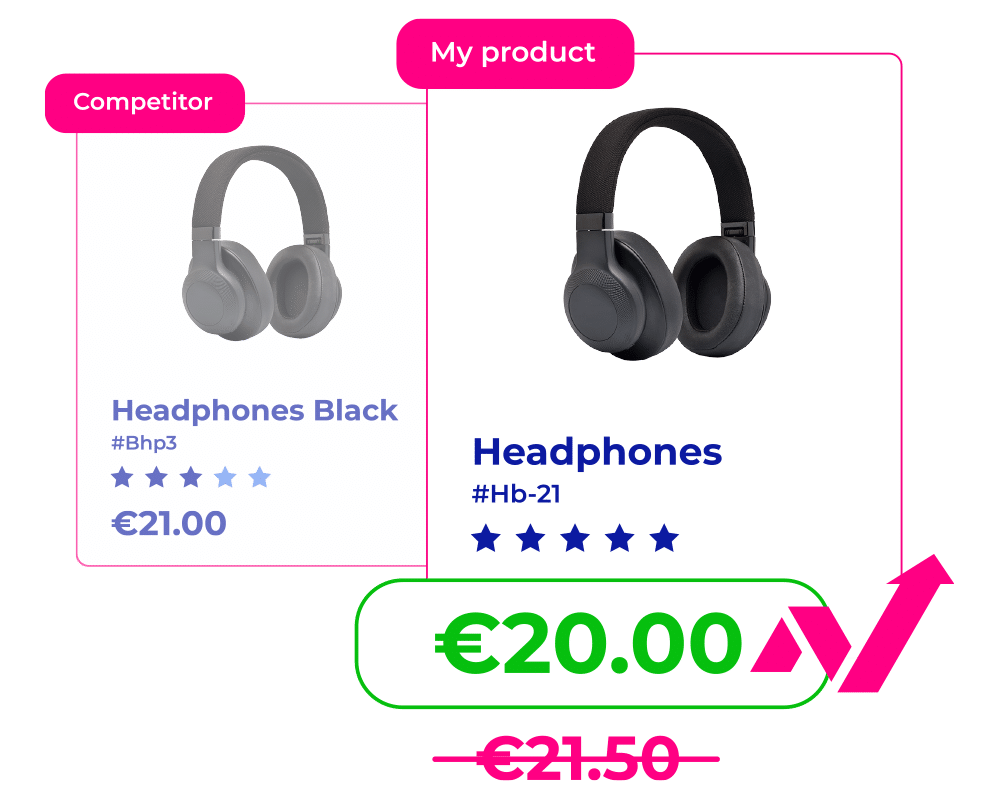In the competitive landscape of e-commerce, pricing your products right is an essential aspect that can make or break your business. You may have the best product in the market, but if your pricing strategy doesn’t resonate with the customer’s perception of value, you are inadvertently steering your ship into dangerous waters.
The 2022 Future of Ecommerce Report by Shopify states that 74% of consumers are significantly influenced by price, highlighting the immense impact of pricing on buying decisions. So, let’s understand how you can avoid price mistakes in e-commerce and provide your customers with the value they seek.
Understand Your Costs
The first step in determining the right price for your product is understanding your costs. This includes both fixed costs (like website hosting, salaries, and rent) and variable costs (like shipping and packaging).
Let’s illustrate this with an example. Suppose you own an e-commerce business that sells handmade candles. The comprehensive cost involved in the production of each candle, which includes the price of raw materials, direct labor, and apportioned overheads, amounts to $10 per item. If you decide to list the product at $12, it might initially appear that you’re generating a $2 profit on each candle sold. However, this simple calculation might lead to an illusion of profitability.
What one must remember is that the selling price of a product should be able to cover the totality of expenses involved in bringing the product to the market, and not just the manufacturing cost. Additional costs such as shipping the product to the customer, packaging the candle to ensure it reaches in perfect condition, and marketing expenses to promote your candle online are also critical and need to be factored in. If these additional costs push the total cost per item to, say, $15, you would be operating at a loss of $3 per candle sold, instead of the presumed $2 profit.
In light of this, understanding and factoring in all your costs – both fixed and variable – when setting the price of your product is of paramount importance. This ensures that your pricing model is not just covering all costs, but also helps you avoid underpricing and consequent financial losses.
Know Your Customers
Understanding your customers’ spending habits and how they perceive the value of your products is another crucial component in pricing. A Bain & Company survey indicates that 60-80% of customers who described a brand as ‘high quality’ still considered pricing before making a purchase. This suggests that even if you have a high-quality product, your customers will not necessarily be willing to pay more for it unless they see clear value. Use customer surveys, feedback, and purchase history to gather insights and set a price that aligns with your customer’s perceived value.
Check Out the Competition
An understanding of the competitive landscape can offer you invaluable insights into the appropriate pricing structure, ensuring you’re neither overpricing and deterring potential customers nor undercutting your own profit margins.
Take, for instance, you are in the business of selling smartphones that pack similar features and capabilities as the latest iPhone model. If the iPhone is being sold at $799 in the market and you set the price of your product at $899, a higher price despite the similarity in features, it may create a negative perception among your target customers. Given the equivalence in product features, most customers will likely be inclined towards the more economical option – the iPhone, in this case.
This scenario underlines the significance of competitive pricing in the e-commerce business. You want to price your products in a manner that reflects their inherent value but also aligns with the price points of similar products in the market, offering customers a compelling reason to choose your product over others.
In this day and age, technology can be a significant ally in maintaining a competitive pricing strategy. Tools such as Netrivals offer a substantial advantage. This kind of tool can help monitor your competitors’ prices in real-time, providing you with an up-to-date market overview and highlighting any pricing changes. Not only does this help you understand your competitors’ pricing strategy, but it can also enable you to automate pricing adjustments based on these insights.
Use Dynamic Pricing
Dynamic pricing allows you to adjust prices based on market demand, time of day, location, and other factors.
The e-commerce titan Amazon provides a perfect example of dynamic pricing in action. According to a study, Amazon adjusts its prices approximately every 10 minutes, highlighting the platform’s commitment to real-time, responsive pricing. This frequent adjustment allows Amazon to remain competitive, capitalise on changing market dynamics, and respond to fluctuations in demand or competitor actions swiftly. Contrast this with Walmart, another major player in the industry, which only changes prices roughly every 50 minutes.
During peak shopping seasons, when demand is high, dynamic pricing allows sellers to optimise profits by incrementally raising prices. However, its utility is not limited to high-demand periods. During off-peak times, dynamic pricing can help maintain steady sales by lowering prices to attract more customers, thereby ensuring a constant flow of revenue. Thus, dynamic pricing serves as an effective tool for businesses to navigate the ebb and flow of market demand while maintaining a steady profit stream.
Offer Bundles and Discounts
The technique of assembling product bundles and extending time-limited discounts can be a powerful strategy to draw in customers who pay close attention to price variations. Take, for example, a scenario where a customer is considering purchasing a laptop priced at $1,200. If you can propose a bundle deal that includes a printer and a laptop bag alongside the laptop, all for a total price of $1,300, it enhances the perceived value of the deal. It gives customers the impression that they’re acquiring more value for their expenditure, and in return, you’re able to uplift your average order value.
Test, Learn, and Iterate
A common misconception in e-commerce is that once a pricing strategy is established, it’s set in stone. On the contrary, pricing strategy is not a static entity but an ongoing process that requires constant attention and fine-tuning. This dynamic nature is necessary because the e-commerce landscape, customer expectations, and market conditions are continually evolving, and so should your pricing strategy. It’s important to continually test different pricing strategies, monitor their impact, and iterate based on what works.
Use Tech Tools
A common misconception in e-commerce is that once a pricing strategy is established, it’s set in stone. On the contrary, pricing strategy is not a static entity but an ongoing process that requires constant attention and fine-tuning. This dynamic nature is necessary because the e-commerce landscape, customer expectations, and market conditions are continually evolving, and so should your pricing strategy. It’s important to continually test different pricing strategies, monitor their impact, and iterate based on what works.
Conclusion: Price Mistakes Were Yesterday!
In conclusion, accurate pricing in e-commerce is not solely about covering costs and securing a profit margin. It involves an in-depth understanding of your customers, costs, competitors, and market trends. By integrating these elements into your pricing strategy, you can steer clear of the pitfalls of wrong pricing and drive your e-commerce.
Name of the Author: Adrian Gmelch






